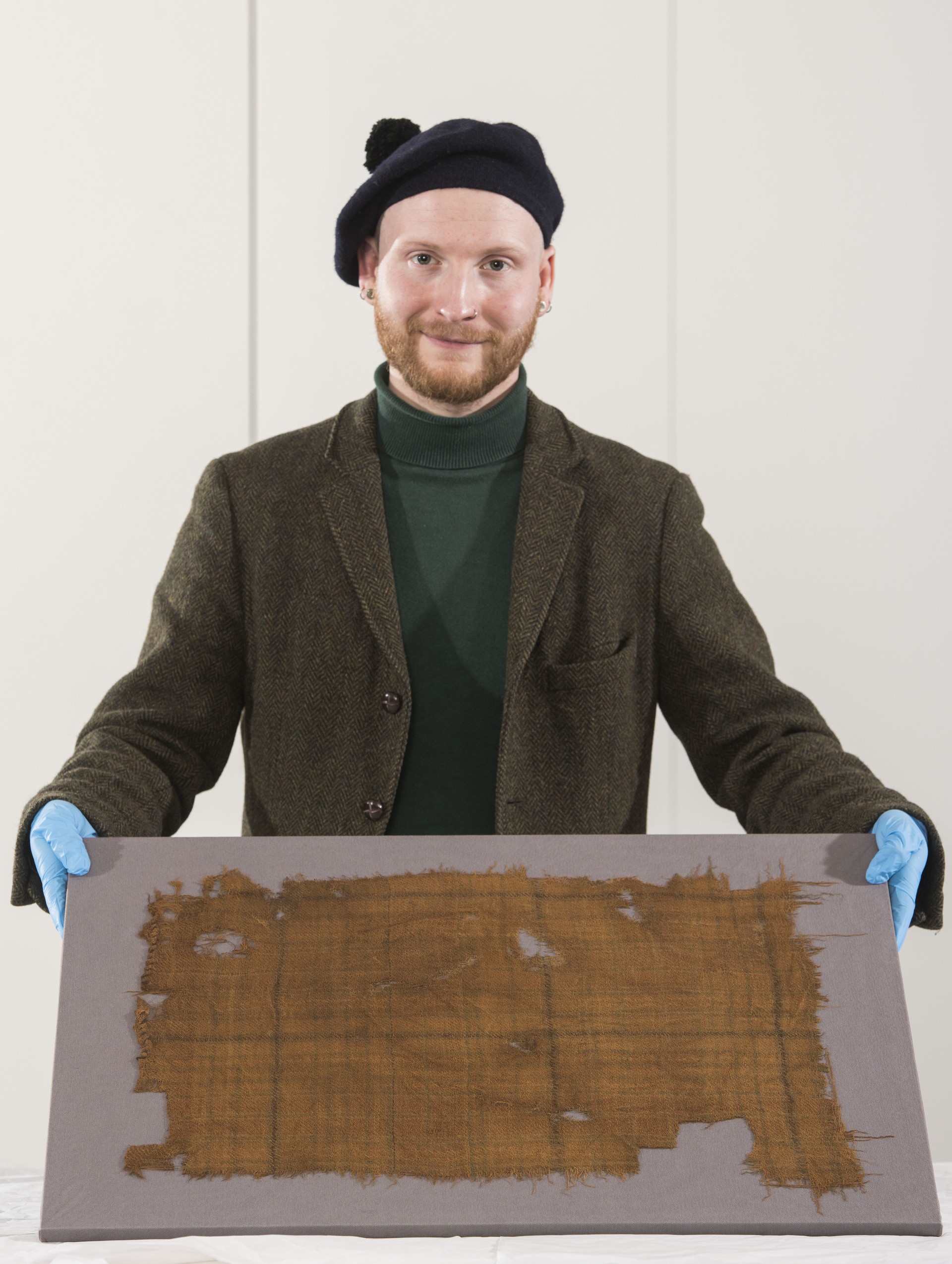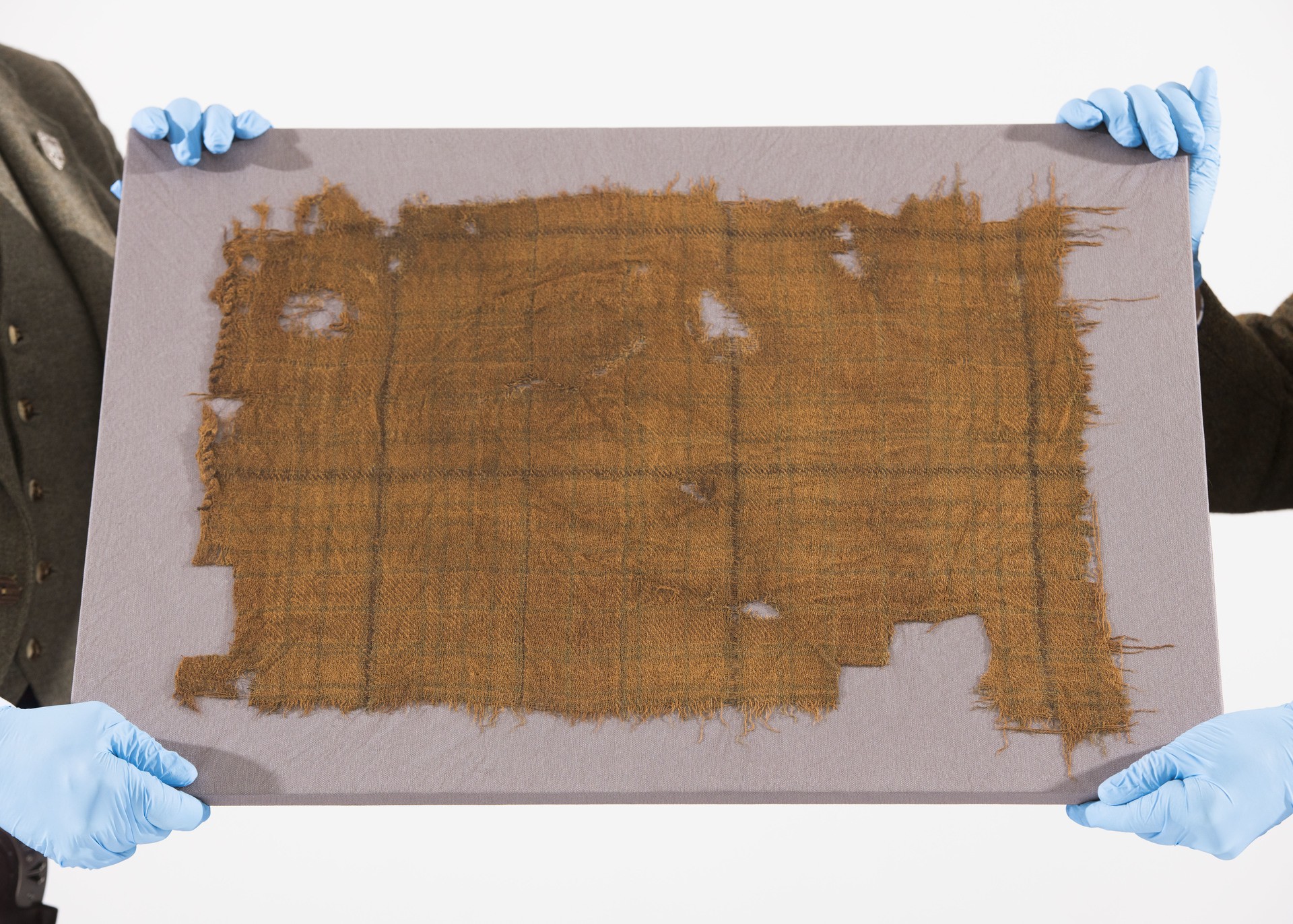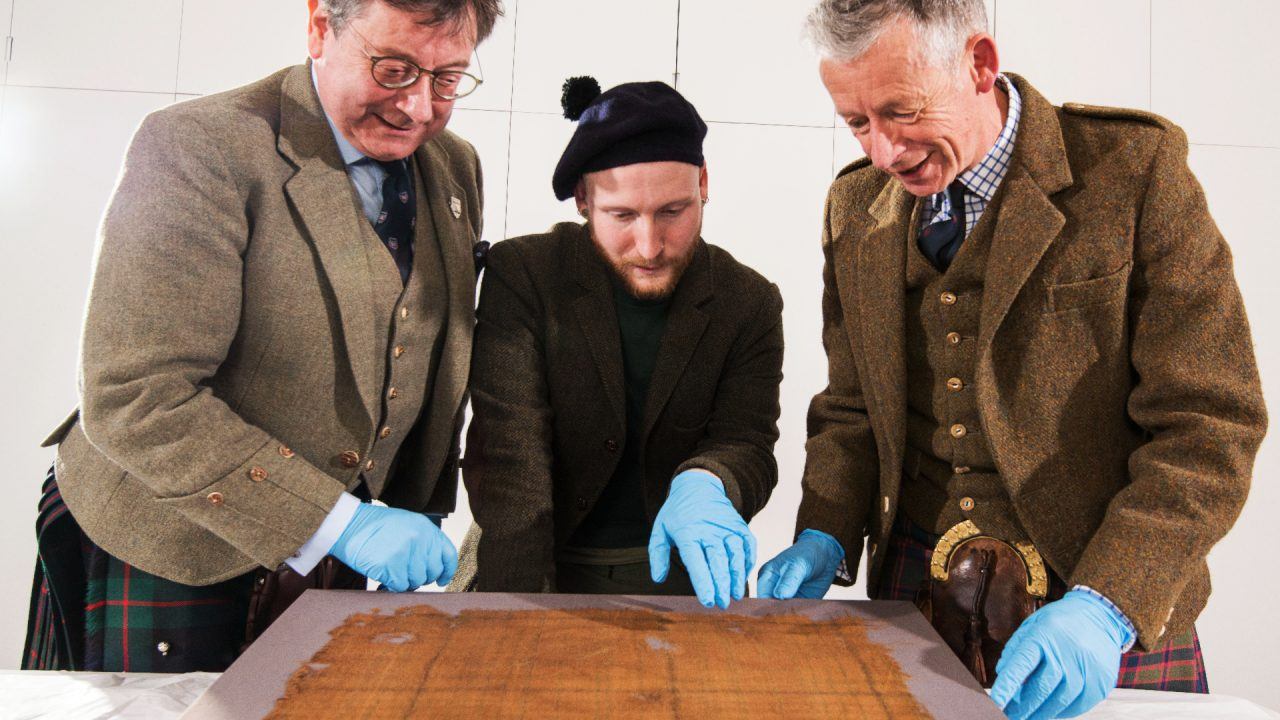Carbon dating has revealed a piece of fabric found in a peat bog to be the oldest known surviving specimen of true tartan in Scotland.
The material was discovered in Glen Affric around forty years ago and has been dated to between 1500-1600 AD.
The Scottish Tartans Authority commissioned dye analysis and radiocarbon testing on the woollen textile to prove its age.
Analysis of the dyes using high resolution digital microscopes identified four colours: green and brown and possibly red and yellow.
 Alan Richardson/V&A
Alan Richardson/V&AScientists determined there were no artificial or semi-synthetic dyestuffs involved in the making of the tartan – pointing to a pre-1750s date.
At the SUERC (Scottish Universities Environmental Research Centre) Radiocarbon Laboratory in East Kilbride, all the peat staining was washed from the tartan before it underwent cardon testing.
The results identified a broad date range between 1500 and 1655 AD, with the period between 1500 and 1600 AD the most probable.
This makes it the oldest-known piece of true tartan found in Scotland.
 Alan Richardson/V&A
Alan Richardson/V&AThe Falkirk “Tartan”, one of the earliest examples of Scottish cloth in existence, dates from the early third century AD and is actually a simpler check pattern woven using undyed yarns.
Experts have said it isn’t possible to determine who the Glen Affric tartan belonged to.
“The tartan has several colours with multiple stripes of different sizes, and so it corresponds to what people would think of as a true tartan,” Peter MacDonald, head of research and collections at The Scottish Tartans Authority, said.
“Although we can theorise about the Glen Affric tartan, it’s important that we don’t construct history around it. Although Clan Chisholm controlled that area, we cannot attribute the tartan to them as we don’t know who owned it.
“The potential presence of red, a colour that Gaels considered a status symbol, is interesting because of the more rustic nature of the cloth. This piece is not something you would associate with a king or someone of high status; it is more likely to be an outdoor working garment.”
The Glen Affric tartan, which measures around 55cm by 43cm is due to go on display for the first time at V&A Dundee’s Tartan exhibition opening on Saturday, April 1.
The piece will be the oldest exhibit among more than 300 objects.
The exhibition examines tartan’s universal and enduring appeal through iconic and everyday examples of fashion, architecture, graphic and product design, photography, furniture, glass and ceramics, film, performance and art.
John McLeish, chair of The Scottish Tartans Authority, said: “The Glen Affric tartan is clearly a piece of national and historical significance. It is likely to date to the reign of James V, Mary Queen of Scots, or James VI/I.
“There is no other known surviving piece of tartan from this period of this age. It’s a remarkable discovery and deserves national attention and preservation.
“It also deserves to be seen and we’re delighted that it is to be included in the Tartan exhibition at V&A Dundee.”
Follow STV News on WhatsApp
Scan the QR code on your mobile device for all the latest news from around the country


 Alan Richardson/V&A
Alan Richardson/V&A



















